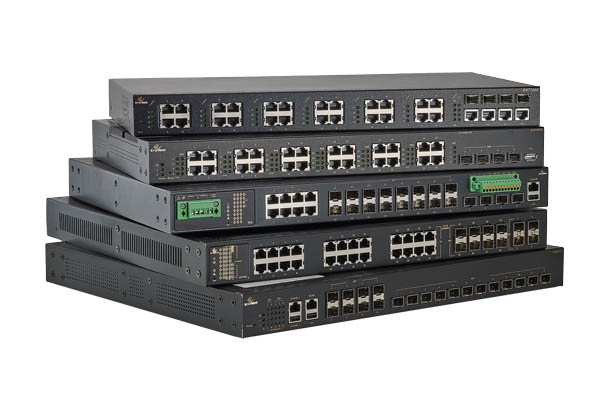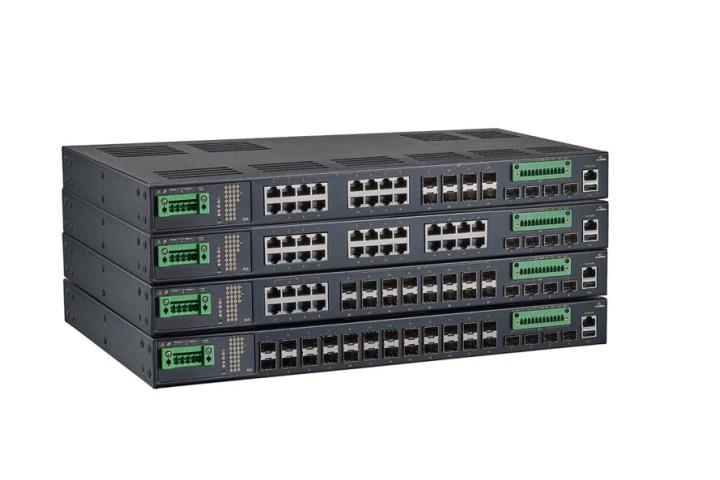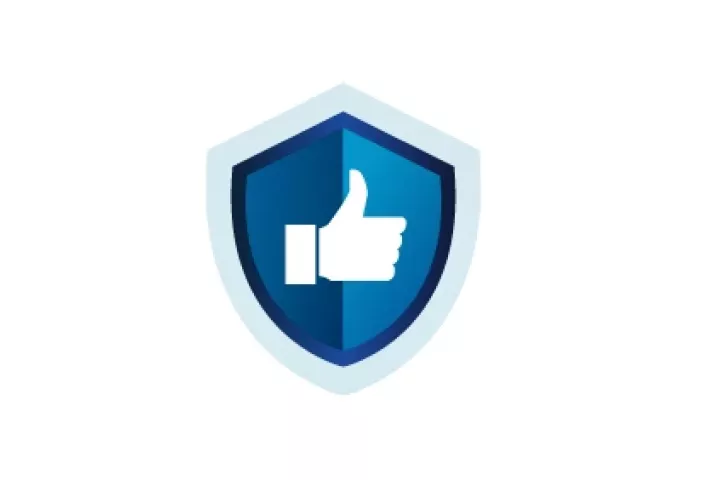Layer 2 Managed Switches - Industrial Ethernet Switches
Managed vs. Unmanaged
Managed switches provide extra value in a network by providing information about the status of the network. This includes things like high bandwidth consumption, unexpected port connections, and power supply failure. Additionally, a managed switch can implement redundancy, a critical feature when connectivity must be maintained at all times. Managed switches also enable administrators to configure, manage and monitor networks for full optimization.
Unmanaged switches are simpler, easy to use, and more economical. However, unmanaged switches do not provide any sort of monitoring, alerts or alarms. These switches are ideal for straightforward network topologies, with a primary focus on basic connectivity, involving limited devices and no VLAN requirements.
| Attribute | Managed Switches | Unmanaged Switches |
|---|---|---|
| Features | VLAN, redundancy, DHCP, port mirroring, QoS, SNMP, etc. | Few features. Mostly fixed configuration. |
| Performance | Highly configurable, control network traffic based on user-defined parameters. Allow for remote troubleshooting. | Plug and play. Some allow configuration of QoS settings. |
| Security | Security protocols for the data, management, and control planes. | Physical security only |
| Cost | Higher to purchase, install, and maintain. | Less expensive |
| Applications | Large networks with more than three nodes. | Small Networks found in homes, small offices, laboratories, etc. |
When should you deploy an Industrial Layer 3 switch?
Layer 3 routing protocols are increasingly vital for industrial network topologies, especially in contexts like intelligent transportation management and urban infrastructure applications. In the past, industrial settings primarily relied on isolated Layer 2 networks, often with limited monitoring capabilities.
However, with the surge in connected edge devices driven by the Industrial Internet of Things (IIoT), the need for enhanced network bandwidth and organization has risen significantly. This evolution presents new challenges in network management and data security. To ensure industrial adaptability, advanced Layer 3 switches offers features that are becoming more essential.

10G Ethernet Switches
Gigabit-managed switches deliver 10 Gbps data transfer speeds, maintaining optimal performance within VLANs, and streamlining network traffic management. These switches are invaluable for real-time data processing in data centers, enhancing network performance, security, and scalability.
Explore a range of rack-mounted 1 and 10 Gigabit switches, perfect for industrial, educational, and enterprise applications that can seamlessly upgrade your network. These switches excel in managing backbone and edge tasks, delivering uninterrupted, high-bandwidth data transfer.

Industrial PoE Solutions
Managed PoE switches efficiently transmit both power and data over a single Ethernet cable, combining powerful software capabilities for network configuration and management. These advanced switches are ideal for larger environments, offering enhanced features like remote monitoring control through PoE watchdog and PoE scheduling functions. Opting for switches compliant with the IEEE 802.3bt standard can provide up to 90 watts of power, ensuring compatibility with power-hungry devices and greatly improving flexibility and convenience.

Frequently asked questions on Managed Ethernet Switches
When should you use a managed switch?

Generally speaking, managed Ethernet switches are used on larger networks, where their monitoring, security, and troubleshooting features are likely to be required. While they are powerful additions to local networks, they are also more expensive and require more knowledge to set up and utilize. Protocols such as SNMP (Simple Network Management Protocol), and the ability to implement VLANs provide network traffic control and monitoring abilities not available on unmanaged switches.
Is a managed switch more secure?
Managed Ethernet switches provide more security than unmanaged switches. Their ability to monitor and control network traffic increases the ability to detect a shutdown threats, and prevent unauthorized access to the network. Authentication protocols such as RADIUS and TACACS+ are secure and robust ways to set up and handle authorized users.
Which one is better? managed or unmanaged switches?
The question of which kind of switch is “better” depends on the specific application. Unmanaged Ethernet switches are simpler, easy to use, and more economical. However, unmanaged switches do not provide any sort of monitoring, alerts or alarms. In simple applications where there are fewer devices, no VLANs, and basic connectivity is the main objective, they are often the best choice. As network size and complexity increases, Managed Ethernet switches will become the more attractive option.
What is the advantage of managed switches?
Managed switches deliver extra value in a network by providing information about the status of the network. This includes things like high bandwidth consumption, unexpected port connections, and power supply failure. Additionally, a managed switch can implement redundancy, a critical feature when connectivity must be maintained at all times. Managed switches also enable administrators to configure, manage and monitor networks for full optimization. A major feature on managed switches is the support of redundancy protocols that minimize downtime in the event of a device failure.
Will a managed switch improve network performance?
It can. Managed switches usually support Quality of service (QoS), which is the use of devices and technologies control network traffic prioritize the network performance of critical systems.
Does managed switch have IP address?
Yes. Managed switches have a unique IP address that is used to access the switch via Telnet or web browser where supported. They ship with a default IP address, and that address is usually changed by the administrator when the switch is unboxed and set up. Unmanaged switches do not have an IP address.
Can a Layer 2 switch do VLANs?
Yes. VLANs operate at Layer 2, and act as IP subnets, Layer 3 constructs. A one-to-one match often exists between VLANs and IP subnets, but it is still it is possible to have multiple subnets on one VLAN.

Why do I need a layer 3 switch?
Traditional Layer 2 logic sub netting faces practical and performance limitations when applied to topologies with a large number of devices. To ensure flexible industrial application planning, Layer 3 Ethernet switches have been introduced into advanced management, with a host of features that are quickly becoming more and more often necessary.
See this article : When should you use an Industrial Layer 3 switch?
What are the disadvantages of a Layer 3 switch?
Layer 3 Ethernet switches are powerful, but are also more expensive and difficult to configure. Layer 2 and unmanaged switches are more economical and easier to set up.
More Products you might be interested in

EG97244 Series

EX75900 Series

EX77900 Series

IG5 Rack Series

EX73900X Series

EX78900X Series

EX78000 Series

EX83304 Series

SmartE Series
Why choose EtherWAN Industrial Ethernet Switches

ADVANCING FOR 20 YEARS

INDUSTRIAL COMPONENTS

GREEN COMMITMENT

ABOVE AND BEYOND STANDARDS

ROCK-SOLID WARRANTY

